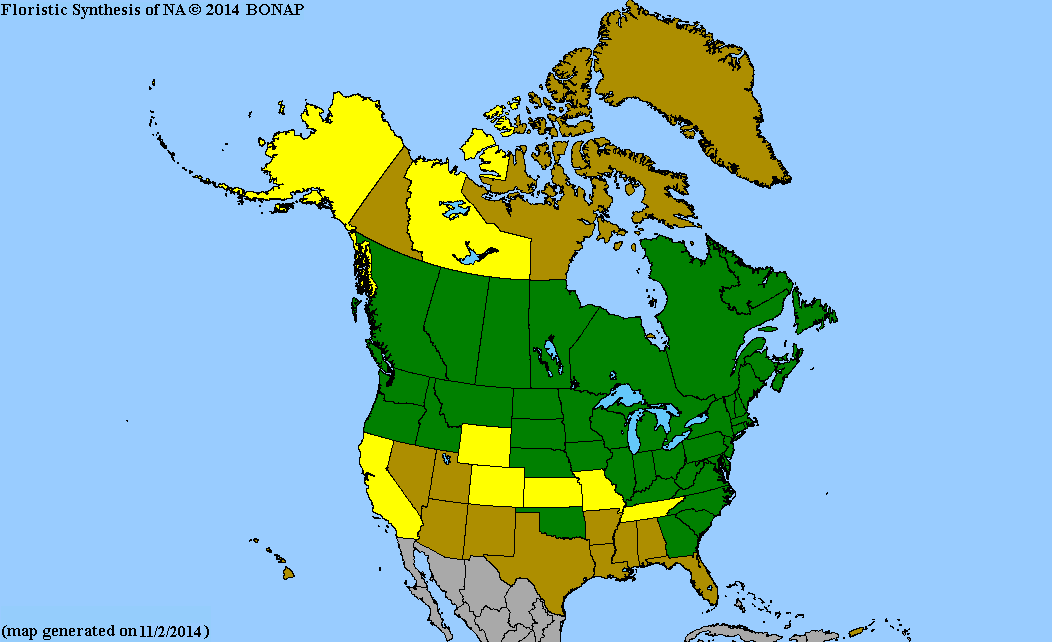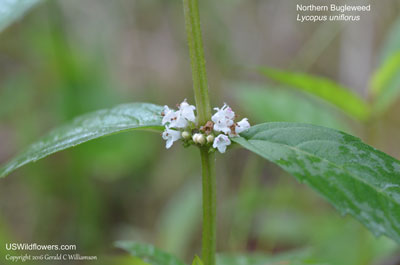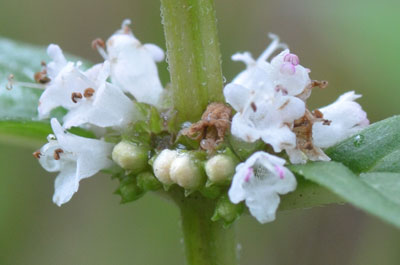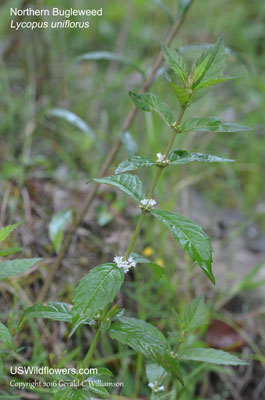Wildflowers of the United States | |||||||||||||
| |||||||||||||
Lycopus uniflorus - Northern Bugleweed, Northern Water Horehound. | Lycopus is a small genus of about 14 species native to Australia, Eurasia, and also North America which is native to 10 of those species. (One of them, Lycopus laurentianus, is not found in the United States, but rather in the St. Lawrence basin of Canada.) One Eurasian species, L. europaeus, has naturalized in Canada and the eastern United States, probably brought over in the 18th century by settlers who used it for medicinal purposes. Herbalists continue to use it today. In spite of being in the Mint family and similar in appearance to the Mentha genus, Lycopus has little to no aroma when the leaves are crushed. The plants are commonly called Water Horehound and Bugleweed. The latter name comes from the bugle-like shape of the flowers, unusual for members of the Mint family. The former name results from its affinity for wet locations, with Horehound coming from words for "downy" (hoary) and "hune", an old English word for a type of plant. The Bugleweed common name is also applied to members of the Ajuga genus, which is also used herbally, so be careful to are getting what you think if you are seeking herbal remedies. Lycopus uniflorus is indeed a plant of wet areas - the one on this page was photographed in a high mountain seepage swamp in western Virginia. Its range spreads from coast to coast in the United States and Canada, excluding the southern tier of states. It is rare in several states, including California, Wyoming, Colorado, Kansas, Arkansas, Tennessee, and in the Great Smoky Mountains National Park. Its normal bloom time is June to November. Found in: AK, AR, CA, CO, CT, DC, DE, IA, ID, IL, IN, KS, KY, MA, MD, ME, MI, MN, MO, MT, NC, ND, NE, NH, NJ, NY, OH, OK, OR, PA, RI, SC, SD, TN, VA, VT, WA, WI, WV, WY, GS   Map courtesy of The Biota of North America Program. Map color key Search Our Database: Enter any portion of the Scientific, Common Name, or both. Do a general Google search of the entire site: #ad
| #ad
| | ||||||||||
|
Commercial / Cookie Notice Looking for Wildflowers for a specific state? Check here: | |||||||||||||
|
All content except USDA Plants Database map Copyright Gerald C. Williamson 2024 | |||||||||||||
Code Update 20230302




